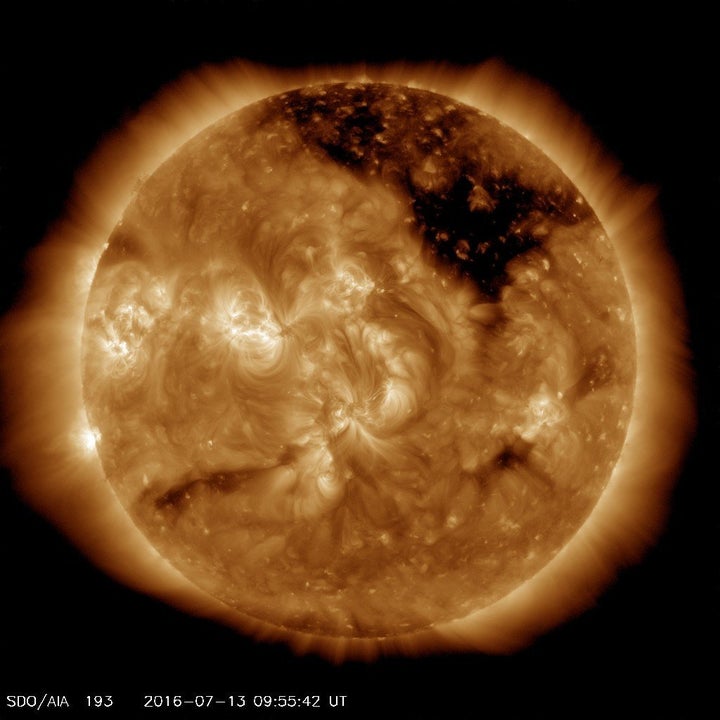While it sounds scary, there’s actually nothing to worry about.
NASA’s Solar Dynamics Observatory has managed to capture a particularly huge “coronal hole” forming on the upper half of the sun.
Often referred to as being a “hole in the sun”, this phenomenon is actually just a natural, albeit impressive, part of the sun’s lifecycle.
“Coronal holes are the source of a high-speed wind of solar particles that streams off the sun some three times faster than the slower wind elsewhere.”
“While it’s unclear what causes coronal holes, they correlate to areas on the sun where magnetic fields soar up and away, without looping back down to the surface, as they do elsewhere.”
Coronal holes are identified by the way in which the magnetic fields stretch far out into space rather than being tightly looped around the surface of the sun.
Tom Yulsman of Discover’s ImaGeo blog collated the footage in the video above along with a great explanation of the phenomenon and its significance as an event.
He writes: “A coronal hole is a place where where the sun’s magnetic field opens out into interplanetary space, allowing hot material from the corona to speed outward. As a result, these areas have very little hot plasma compared to their hotter, brighter surroundings. So they appear much darker.”

They look drastic, but in terms of the sun’s health they’re completely normal.
What they can do however is cause a communications nightmare back here on Earth.
The resulting winds which speed out of the darker zone will hit the Earth’s magnetosphere disrupting communications, satellites.
There is of course one upside to all of this though which is that what it will cause are some pretty stunning auroras.
